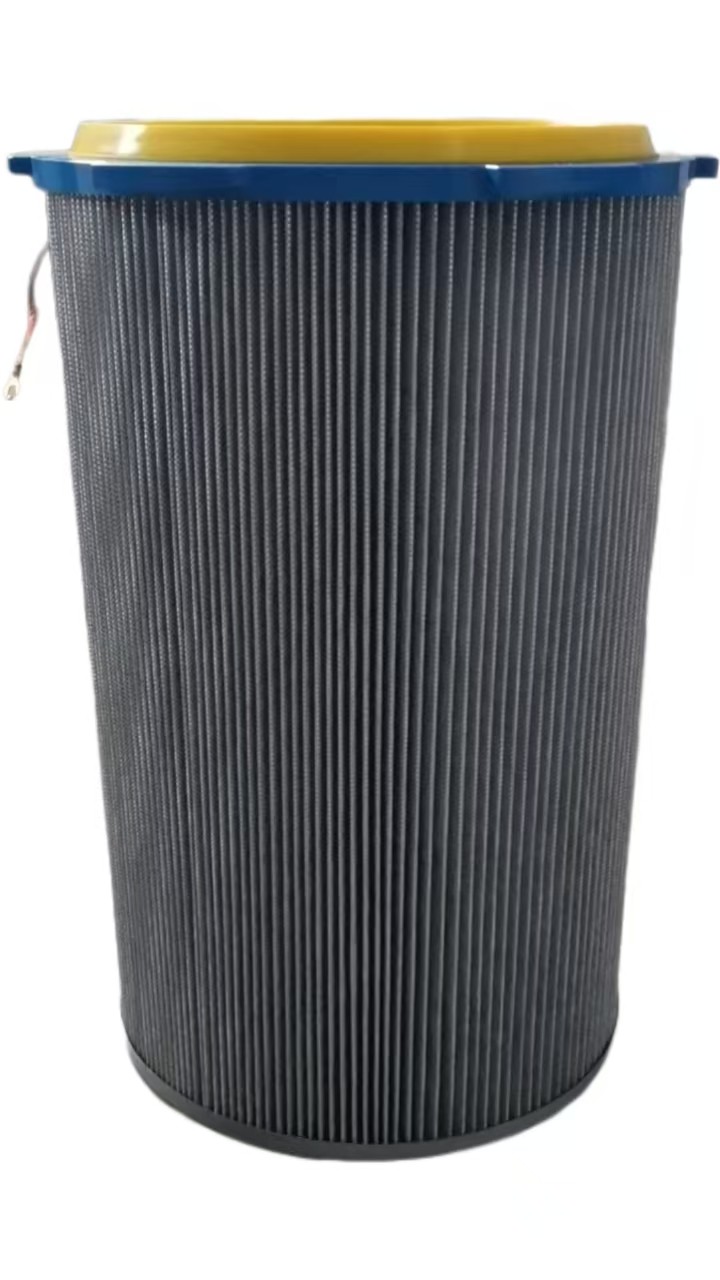- English
- Español
- Português
- русский
- Français
- 日本語
- Deutsch
- tiếng Việt
- Italiano
- Nederlands
- ภาษาไทย
- Polski
- 한국어
- Svenska
- magyar
- Malay
- বাংলা ভাষার
- Dansk
- Suomi
- हिन्दी
- Pilipino
- Türkçe
- Gaeilge
- العربية
- Indonesia
- Norsk
- تمل
- český
- ελληνικά
- український
- Javanese
- فارسی
- தமிழ்
- తెలుగు
- नेपाली
- Burmese
- български
- ລາວ
- Latine
- Қазақша
- Euskal
- Azərbaycan
- Slovenský jazyk
- Македонски
- Lietuvos
- Eesti Keel
- Română
- Slovenski
- मराठी
- Srpski језик
What are the different types of industrial dust collectors?
2024-09-25

What are the different types of industrial dust collectors?
There are several types of industrial dust collectors, including baghouse dust collectors, cartridge dust collectors, cyclone dust collectors, and electrostatic precipitators. Baghouse dust collectors are among the most efficient types of dust collectors available, capable of removing fine particles and heavy dust loads. Cartridge dust collectors are best suited for environments with limited space, while cyclone dust collectors are ideal for separating large particles from the air. Electrostatic precipitators use a high-voltage electric field to remove small, fine particles from the air.What factors should be considered when selecting an industrial dust collector?
When selecting an industrial dust collector, various factors should be considered, including airflow volume, collection efficiency, operating costs, maintenance needs, and environmental regulations. The airflow volume required depends on the size of the facility and the amount of dust generated by the operation. Collection efficiency refers to the percentage of particles removed from the air, and operating costs depend on the type of filter media used and the frequency of filter replacement. Maintenance needs should also be considered, such as the time required for filter replacement, and compliance with environmental regulations is essential to avoid fines.How does an industrial dust collector work?
An industrial dust collector works by drawing dust-laden air into the unit through an inlet duct. The air is then filtered through a series of filter cartridges or bags, which capture the dust particles. The cleaned air is then exhausted through a vent, and the collected dust is removed from the filter cartridges or bags and disposed of properly. Depending on the type of dust collector, there may be additional steps involved, such as cyclonic separation or electrostatic attraction.Industrial dust collectors are a crucial part of any dust-producing industrial operation. With the right type of dust collector selected for the operation, employees can work in a clean and safe work environment free from harmful respiratory hazards.
Summary
In summary, industrial dust collectors are vital equipment used to remove particulates from the exhaust gas generated by industrial processes. There are different types of collectors available, including baghouse dust collectors, cartridge dust collectors, cyclone dust collectors, and electrostatic precipitators. The selection of the right type of equipment depends on several factors that should be considered carefully. Botou Xintian Environmental Protection Equipment Co., Ltd. is a professional manufacturer of industrial dust collectors, filters, cartridges, and bags. With over a decade of experience, the company continues to innovate in the fields of air filtration and dust collection, providing efficient and high-quality solutions to meet industrial demands. For more information or to request a consultation, please contact btxthb@china-xintian.cn.References:
Zhang, J. (2020). Industrial Dust Collection Technology. Journal of Environmental Sciences, 94, 146-154.
Li, S. (2018). Evaluation of Dust Collector Performance. Environmental Engineering Research, 23(3), 337-344.
Wang, L. (2016). Design of Efficient Industrial Dust Collector. Advanced Materials Research, 1124, 531-537.
Xu, Q. (2016). Industrial Dust Collection Regulations and Standards. International Journal of Environmental Research and Public Health, 13(5), 507.
Zhang, Y. (2014). Performance Modeling of Cyclonic Dust Collectors. Powder Technology, 259, 8-18.
Liu, K. (2012). Electrostatic Precipitator Filter Technology. Journal of Industrial Ecology, 16(2), 193-202.
Zhou, H. (2010). Evaluation of Cartridge Dust Collector Performance. Industrial Health, 48(6), 812-818.
Gao, C. (2008). Baghouse Dust Colllector Design. Proceedings of the 2008 Annual Conference on Clean Air.
Wu, X. (2006). Industrial Dust Collection System Maintenance. Journal of Occupational and Environmental Hygiene, 3(3), 114-123.
Chen, H. (2003). Industrial Dust Collection Principles and Practices. Journal of Loss Prevention in the Process Industries, 16(3), 231-241.
Wang, Z. (1998). Industrial Dust Collection Efficiency and Impact on Indoor Air Quality. Indoor and Buillt Environment, 7(3-4), 137-146.




